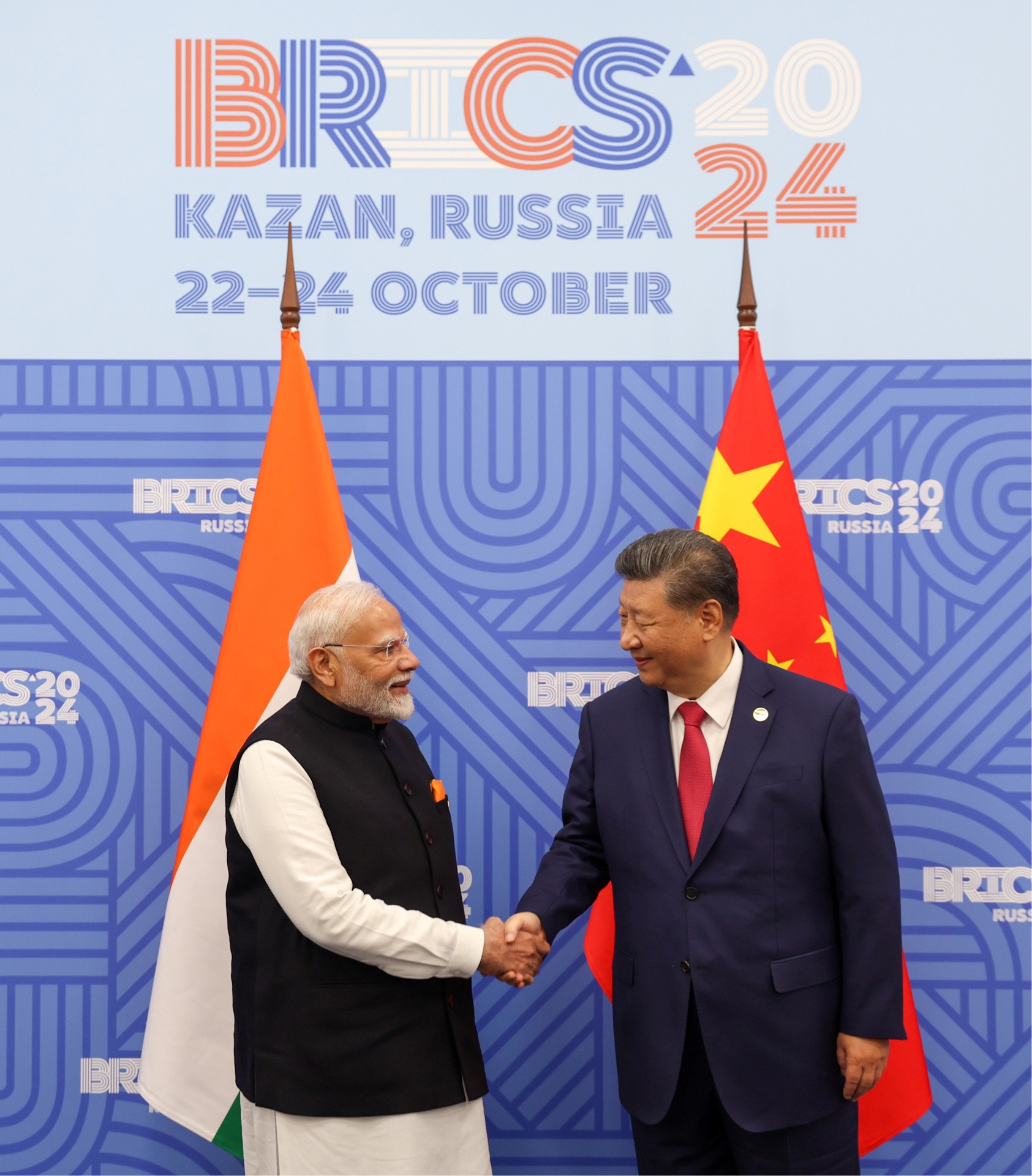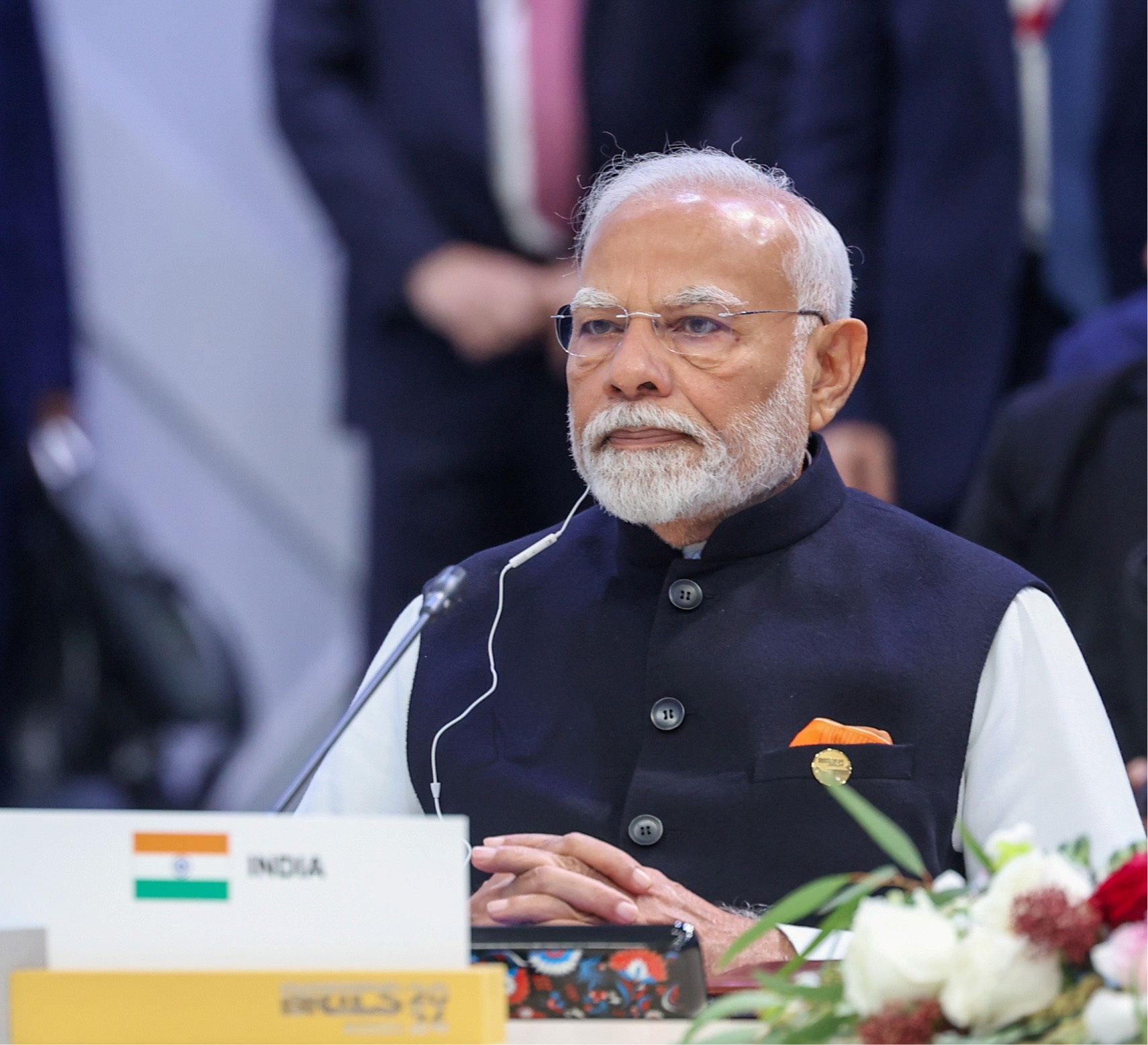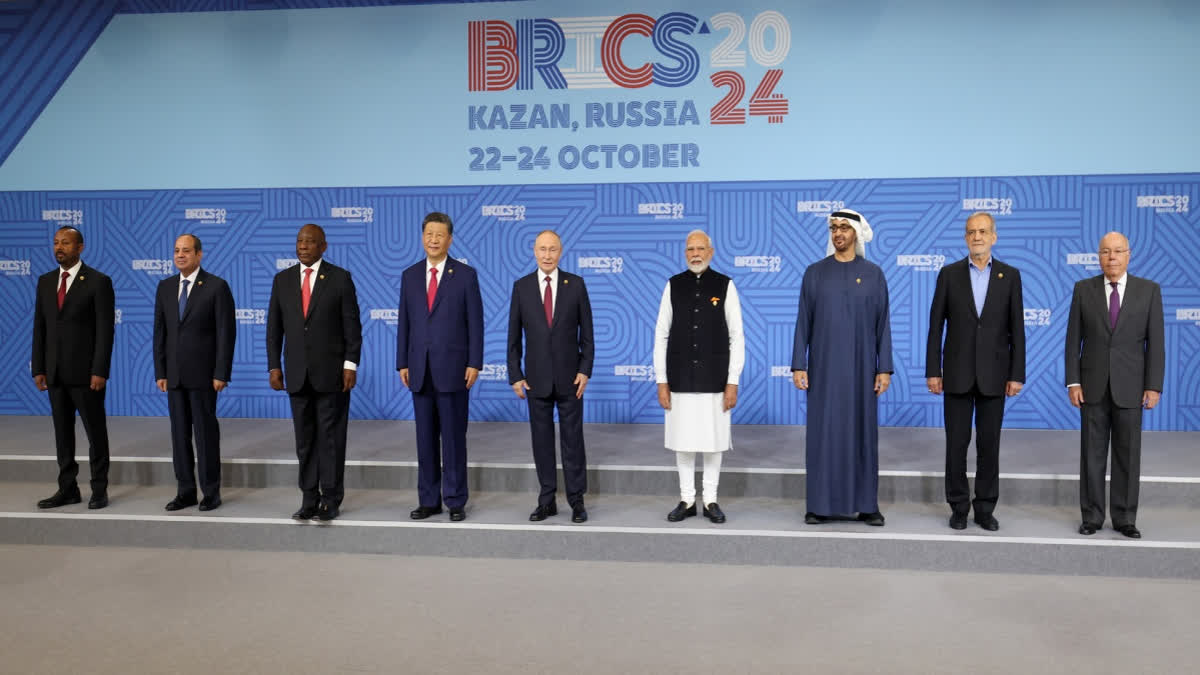The recently concluded BRICS summit in Kazan marked an interesting turn in the evolving global matrix, looking to carve out a more assertive identity for the BRICS nations. The BRICS grouping has expanded its membership beyond just the five members - Brazil, Russia, India, China, and South Africa – to include Iran, Egypt, Ethiopia, the United Arab Emirates and potentially a host of other nations.
Against the backdrop of rising multipolarity, the summit tried to spotlight the potential of the BRICS coalition as an alternative to Western-led economic frameworks. In the same breath, it also underscored several internal challenges and competing ambitions within the group. Perhaps most starkly, the summit provided mediation grounds to several countries such as India-China and Armenia-Azerbaijan which are locked in disputes, raising the strategic purchase for Moscow. Despite a successful summit, the question that BRICS was left pondering with is whether the group will be able to effectively showcase the ambitions of a bloc envisaged to represent the voices of the Global South, in what is becoming an increasingly asymmetric group.

India’s approach to BRICS has been one of cautious optimism. While India acknowledges BRICS as a platform that empowers non-Western countries, it differentiates this stance from being outrightly anti-West. This careful positioning stems from India's intent to balance its ties with the West, particularly the G7, even as it engages with BRICS and other non-Western coalitions like the Shanghai Cooperation Organisation (SCO).
India's statement has underlined its perception of BRICS as a grouping for inclusive development of emerging economies which should not make opposing the West its primary aim. Therein lies the message of strategic balance in advocating a multipolar world order.

From the U.S. standpoint, BRICS is a complex entity which it has started to take note of. While not an immediate threat to Western economic institutions such as the International Monetary Fund (IMF) and the World Bank, the growing economic power within BRICS, particularly driven by China, is noteworthy. The recent summit underscored potential cooperation among BRICS members on issues like economic interdependence and de-dollarisation.
Whether the BRICS will emerge as a platform that could gradually shift trade and investment patterns away from dollar dependency remains to be seen. The West would be keenly watching countries such as Saudi Arabia and Argentina which, while not joining BRICS, have shown interest in its framework. As BRICS expands its outreach, the U.S. is likely to keep an eye on these shifting alliances and evaluate the longer-term impact of a grouping that, while ideologically diverse, could seek a greater voice in reshaping global norms.
Symbolism and substance
The BRICS summit unfolded as a high-profile event, with over 35 nations in attendance and a notable presence by the UN Secretary-General. This turnout was a symbolic victory for Moscow, which leveraged the summit to underscore its place on the global stage amid Western sanctions and isolation following the Ukraine conflict. Russia extended significant diplomatic warmth to participating leaders, signalling its readiness to deepen its relationships across the developing world. For Russia, the summit offered an opportunity to highlight its pivot toward Asia, the Middle East, and Africa, aiming to construct a multipolar bloc capable of countering Western-led sanctions.

China's outsized influence within BRICS is both a strength and a point of contention for the bloc. With a slowing economy, China’s interests in BRICS lie in creating economic alliances that bolster its trade partnerships and provide alternative growth avenues. China's advocacy for a BRICS common currency, for instance, has raised concerns about its desire to reduce dependency on the dollar — an effort that resonates with Russia.
However, while the common currency proposal garners attention, it remains a distant goal due to vast disparities in BRICS economies, fiscal policies, and levels of financial integration. At the same time, China’s growing economic clout has led to debates on BRICS membership expansion. Expansion masquerading as multipolarity may not take BRICS too far. As such, India has expressed caution over expanding BRICS membership without a clear framework, as it could risk diluting the group’s purpose and make its internal dynamic asymmetric.
As the BRICS framework evolves, India faces the challenge of balancing its role within the grouping against its strategic relationships with the West. U.S.-India ties have deepened significantly in recent years, encompassing defence, technology, and climate partnerships. India's participation in the Quad and other U.S.-led initiatives reflects its commitment to countering Chinese dominance in the Indo-Pacific. Nonetheless, India’s engagement with BRICS allows it to maintain strategic flexibility, ensuring it can collaborate with non-Western countries without compromising its ties with the West.

In the long term, India's balancing act will be tested as BRICS takes on more assertive postures on global economic issues. India's leadership will be crucial in steering BRICS toward an agenda focused on sustainable growth while steering clear of a stance that could alienate Western partners. The Kazan summit underscored this tightrope walk, with India asserting BRICS' non-Western orientation, while distancing itself from anti-West narratives.
The Kazan summit served as a milestone for BRICS as it seeks to transition from a forum for dialogue to a more dynamic platform for action. However, the group's evolution will depend on how it navigates its internal power dynamics and whether it can strike a balance between addressing the aspirations of emerging economies and managing the dominance of its most powerful members.
For the US and its allies, BRICS remains under close observation, as it offers an alternative framework that could, over time, reduce dependency on Western institutions. The summit highlighted the ambitions and challenges inherent in this process, and the coming years will determine whether BRICS can redefine global governance, moving beyond a symbolic gathering to a driving force in shaping the multipolar world it envisions.
(Disclaimer: The opinions expressed in this article are those of the writer. The facts and opinions expressed here do not reflect the views of ETV Bharat)



